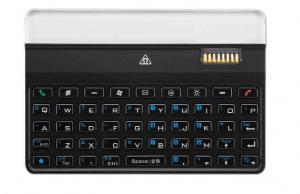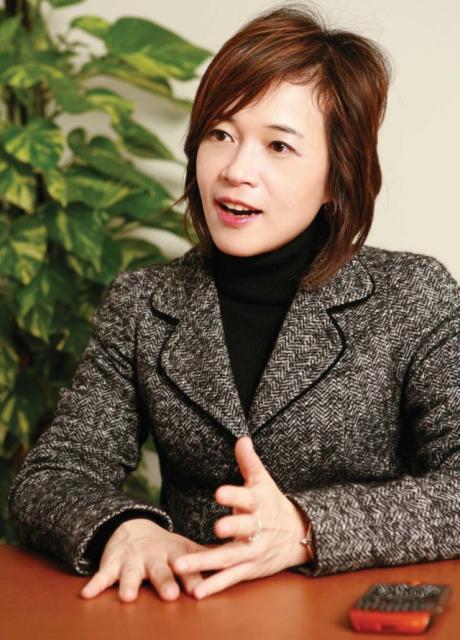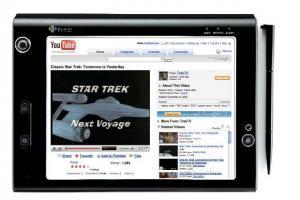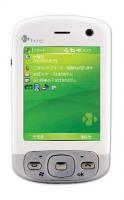The Rise of the Smartphone
By Joseph Greenberg
 Japanese consumers are relatively demanding when it comes to cell phone handsets
Japanese consumers are relatively demanding when it comes to cell phone handsets
A new market
The wireless industry in Japan has proved a treacherous place. Most notoriously, it was the Japan market that tripped up global giant Vodafone and device makers such as Nokia and Motorola have also had difficulties here—mainly because of their inability to win over demanding, and even ‘fussy,’ consumers. The former also got into trouble last year as a result of handset overheating problems while the latter has suffered in Japan as its market share has declined globally, as well as facing a patent infringement lawsuit related to its Razr handset from Fujinon, a Japanese optical equipment manufacturer.
However, for others, the market has proved a goldmine given the constant demand for new gadgets, features, designs and functions. And the market is growing. According to Gartner research, in the third quarter of 2007, handset sales were 21.8% higher than in the previous year, reaching 13.1 million. For device makers there are clearly lucrative opportunities and the buzz seems to be moving beyond regular cell phones and towards more comprehensive devices such as Smartphones.
Smartphones are basically more sophisticated handsets that have email functions as well as more complex operating systems that make them much more like portable PCs. Given that Japanese mobile phones were among the first in the world to include email, there was initially skepticism that Smartphones could compete effectively in the market. However, because of the growing demand by users for the same applications on their phone that they use on their computers, the sector has seen rapid growth. According to a Research and Markets report, Smartphones are expected to account for over 13% of all handsets in the Japanese market by 2010. The growing trend that industry commentators and observers have identified is for more handsets that use a Windows operating system— known more commonly as Windows Mobile.
Moreover, the interest in Windows Mobile comes equally from the corporate and consumer sectors. Business people want to be able to open attachments and store presentations while consumers want to be able to watch movies or use the normal instant messaging services they use on their PCs. Willcom’s W-Zero3 device was the first Windows Mobile Smartphone to be released in Japan, but the product uses the PHS network—a cheaper but shorter-range receiver system that is limited to Japan. In other markets, the US and Europe for example, Blackberry has been very successful in the corporate market but, in Japan, it has yet to establish its presence and experts on the industry say it could face problems here—not least because it has entered the market so late due to patent issues and the extra time needed to make the devices suitable for Japanese language input. Moreover, Darren McKellin, Country Manager for Visto Corporation, who provide push mail services for Smartphones, told us that “small and cute rule in Japan, and the only Blackberry device in Japan is the 8707 which is neither small nor cute. Windows Mobile is running on many different devices and according to Microsoft the number of new models coming out in 2008 are in the double digits.”
Beyond the cell phone
In terms of devices then, there is a growing demand for phones that provide Windows Mobile and growing space for device makers to win over Japanese consumers on points of style and technology. It is this niche that HTC, a Taiwanese device manufacturer has seen. Jennifer Chang, Representative Director for HTC Nippon claims HTC will be able to pioneer the Smartphone in Japan and bring a new kind of mobile experience to the market: “Seven years ago, DoCoMo developed I-mode that brought the internet to mobile phones in Japan. However, with the advent of Web 2.0 and developments in people’s online lives, there is a new potential for devices to enable consumers to access more than just email on their mobiles. Windows Mobile, combined with the innovative features of our devices, makes this possible.” Chang thinks that in the future Japanese users will expect to be able to enjoy a wider range of internet applications on their mobile handsets— Facebook, Mixi, YouTube and so on.
HTC has already become the world’s leading provider of Windows Mobile Smartphones. In Japan, it has released devices in collaboration with DoCoMo and SoftBank. For example, the SoftBank X02HT (as pictured on the cover) provides a Windows Mobile 6 platform complete with PDF, Word, Excel and PowerPoint viewers, a QWERTY keyboard and a 2.4 inch QVGA display as well as having compatibility with 3G High Speed, wireless LAN, and Bluetooth. The X02HT is the only fully bilingual device on the market with an English user interface as well as being able to handle Japanese input—this makes it a hit with foreigners in Japan as well as domestic consumers. Andrew Shuttleworth, who runs a Windows Mobile website (www.windowsmobileinjapan.com) told us he has had a good experience with the X02HT and recommends it for first-time users: “It’s a very simple but powerful device. You can use Skype and MS Office on it easily, the keyboard is userfriendly and obviously the bilingual function comes in handy.”
For more adventurous customers, the HTC Advantage X7501 is really in a whole new category of phone. It folds up neatly into the size of a pocket organizer but with its magnetic detachable keyboard it can basically transform into a mobile PC, which with wireless capability, allows users to do pretty much anything that they might do with a notebook computer, and more.
The HTC Advantage X7501, with its detachable, magnetic minikeyboard and fully operational Windows operating system is effectively the most powerful and portable mobile office in the world. With wireless capability, all of its functions are 100% mobile, and yes, you can make normal calls with it too. This type of Smartphone resets the agenda for device makers.
 The HTC Advantage X7501: www.japan.htc.com/product_x7501.htm
The HTC Advantage X7501: www.japan.htc.com/product_x7501.htm
Storage space is impressive with a hard drive of 8GB and the miniSD slot provides extra storage options if required. For business people there are built-in video output capabilities making it possible to use the device with projectors or TVs for presentations.
The 5-inch VGA color touch screen means the device is good for leisure with a large enough screen to be able to display movies or webcam feeds— one end user mentioned that he likes to take the device into the kitchen with him when cooking so he can refer to online recipes. Other features include GPS navigation, MS Outlook, calendars and tasks.
Another device, the HTC P3600 is also SIM lock free, and this, combined with its compact design, makes it suitable for people who travel lots—users can insert the SIM card of most domestic carriers. We spoke to ‘Kzou,’ a Japanese Windows Mobile expert (who also runs www.htc-fan.jp), who told us that he has taken the P3600 abroad with him, “I took it to Hong Kong and Amsterdam with me. This meant I could get a cheap, flat-rate local connection just by slotting in a different SIM card. The GPS system that uses Google Maps also helped me out quite a few times.”
Taking center stage
Originally called High-Tech Computer, HTC was founded by Cher Wang and Peter Chou in Taiwan, in 1997. As the name might imply, the soul of the company is its technological development section that prides itself on being the first to develop new features and functions. In terms of product innovation, HTC was the first to develop a Microsoft color Pocket PC in 2000, first to create the Microsoft Smart Music phone in 2004, and first to develop the Microsoft tri-brand 3G PDA Phone and 3G Smartphone, in 2006.
HTC is a serial pioneer and this is what has allowed them to become allied with some of the biggest names on the global stage
As well as being known among early adopters for its rapid-fire production of new technology, HTC is also an early adopter itself. Not only has it been the first to produce certain kinds of devices but it was also the first to use other innovations on the market. It pioneered use of the Intel StrongArm processor in 1999, was the first to use TI OAP and Samsung ARM 9 in 2002 and, most recently, has led the way in delivering Windows Mobile enabled handsets. In this sense HTC is a serial pioneer and this is what has allowed them to become allied with some of the biggest names on the global stage—Microsoft, T-Mobile, Hewlett-Packard, Orange, to name just a few. Before launching its own brand it built itself up as an original export manufacturer (OEM) and as original design manufacturer (ODM)—in such roles it was used to being in the shadows. But this is now changing.

Jennifer Chang
Jennifer Chang is the Representative Director of HTC Japan, established in April 2006, which is the third overseas production office of HTC. She is responsible for business development, expansion of sales, promotion, technology development, marketing, and all factors related to the provision of after-sales service. Her last position was at HTC headquarters in Taiwan where she worked as director of the business strategy development department; it was during this time that she began to focus on Japan as a more important area.
Before joining HTC, Jennifer was head of the promotions department at a Taiwanese telecommunications company where through her strategic diffusion of SIM cards (or EF cards, for pre-paid calls), she led the company to achieve a 60% market share. After that, she started up an integration project/business strategy development department and since 2000, embarked on a range of exciting projects including development and sales of GPRS computer terminals.
She then established FETNet, an internet access provider, as a wireless brand and rapidly increased user numbers and improved Average Revenue Per User.
Jennifer Chang graduated with an MBA from the National University of Taiwan, Institute of Management. She has an in-depth knowledge and wide experience of the telecommunications industry and of the Japanese market. Fluent in Mandarin, English and Japanese, Jennifer is a keen pianist and likes to spend her weekends exploring the Japanese countryside.
In association with these giants, HTC has managed to carry itself to greater heights and is becoming more visible as a brand in its own right—it is after all the world’s leading maker of Windows Mobile handsets. This was put succinctly in a BusinessWeek article about the company in 2006 entitled ‘The Hottest Tech Outfit You Never Heard Of’—looking at its work with Microsoft the article referred to HTC as Bill Gates’ “secret weapon.” However, since 2006 the company and the brand are now independently famous with a strong presence in the US and Europe and a good reputation for repeatedly coming out with new technology and concepts. They broke onto the international stage with the TyTN (pronounced Titan), the first device released under the HTC brand and then more recently wowed consumers with their finger-sensitive ‘Touch’ phone. The Times newspaper in the UK trumpeted this release as the one that “beat Apple to the draw”—slick features include being able to trim tunes in the media player, making them usable as ringtones.
Sales have also been on the rise, particularly in the home market in Taiwan, where HTC has established a continuously growing market share as well as being listed on the Taipei Stock Exchange. This year it acquired Dopod International, a PDA and Smartphone distribution company with outlets in nine different countries throughout the region. This will strengthen HTC’s plans to anchor itself more firmly in Asian markets as well as taking its workforce to over 5,000.
 Jennifer Chang, Representative Director of HTC Japan
Jennifer Chang, Representative Director of HTC Japan
As a relatively young enterprise with the potential to be on the same scale as some of the biggest, HTC is also forward-thinking in terms of management. Jennifer Chang told us that the entrepreneurial spirit is alive and kicking at all levels of the company, “and this is particularly the case in Japan as it is a relatively new market for us and we are just starting up—we therefore recruit people not only with good experience and foreign languages, but also those who are also able to carry the business forward themselves.” In Japan, the work for HTC is harder in a sense because of the structure of the market. Unlike in Europe, the carriers are the main players and consumers are often unaware of the companies that make the actual handsets.
Nevertheless, Chang sees the Japanese market as fertile because there is a demand for high quality products and she is convinced that HTC will be able to offer users many more options than they have at present. Her priority is to establish the company here and empower the employees to take control of the organization. For Chang, she has also had experience of working for operators so she is pleased with the way she has been able to use her knowledge of how they work and what technologies they need to foresee future trends. This has also helped her to build relationships with Japanese operators and thus her most exciting achievement since working in Japan “has been to do a deal with DoCoMo. The Japanese market is very hard to enter and we managed to put something together within six months.”
With constant, heavy investment in R&D, bagfuls of ambition and some exciting product launches in the pipeline, the wireless industry in Japan should expect to become more familiar with the HTC brand in the future.
JI
Contact details
HTC Nippon Corporation
16F, Akasaka Twin Tower Main Tower
2-17-22 Akasaka
Minato-ku
Tokyo 107-0052
www.htc.com







